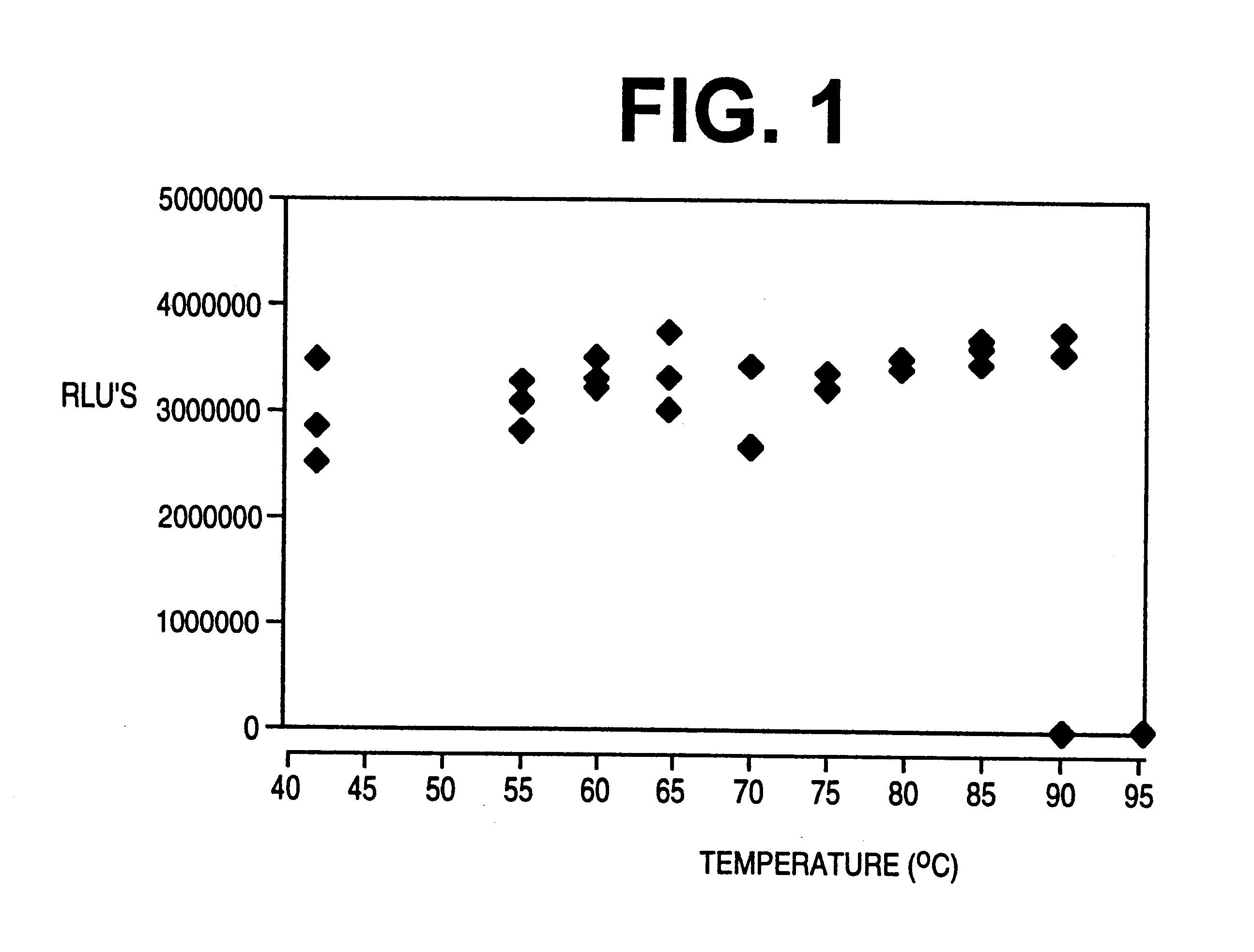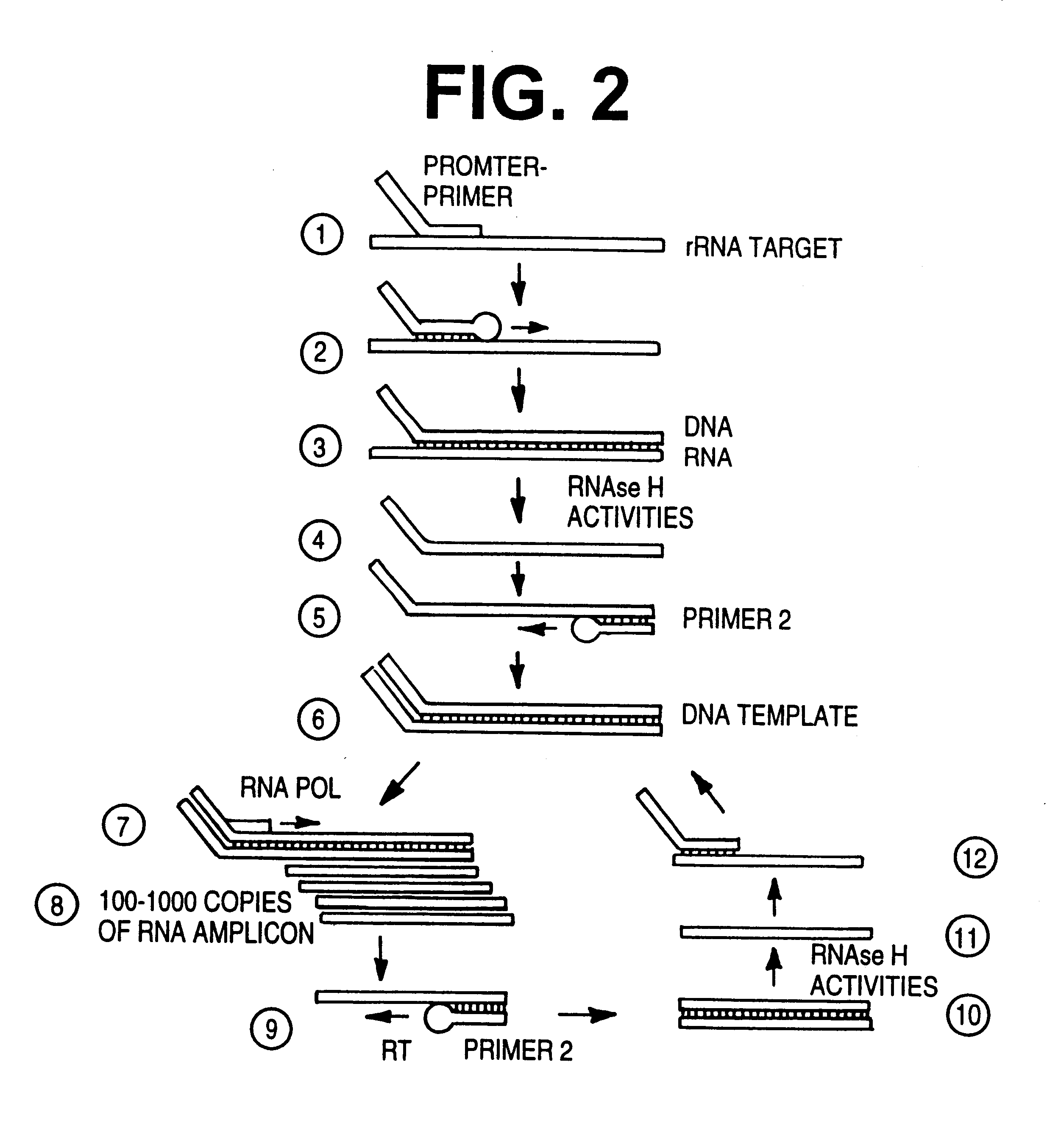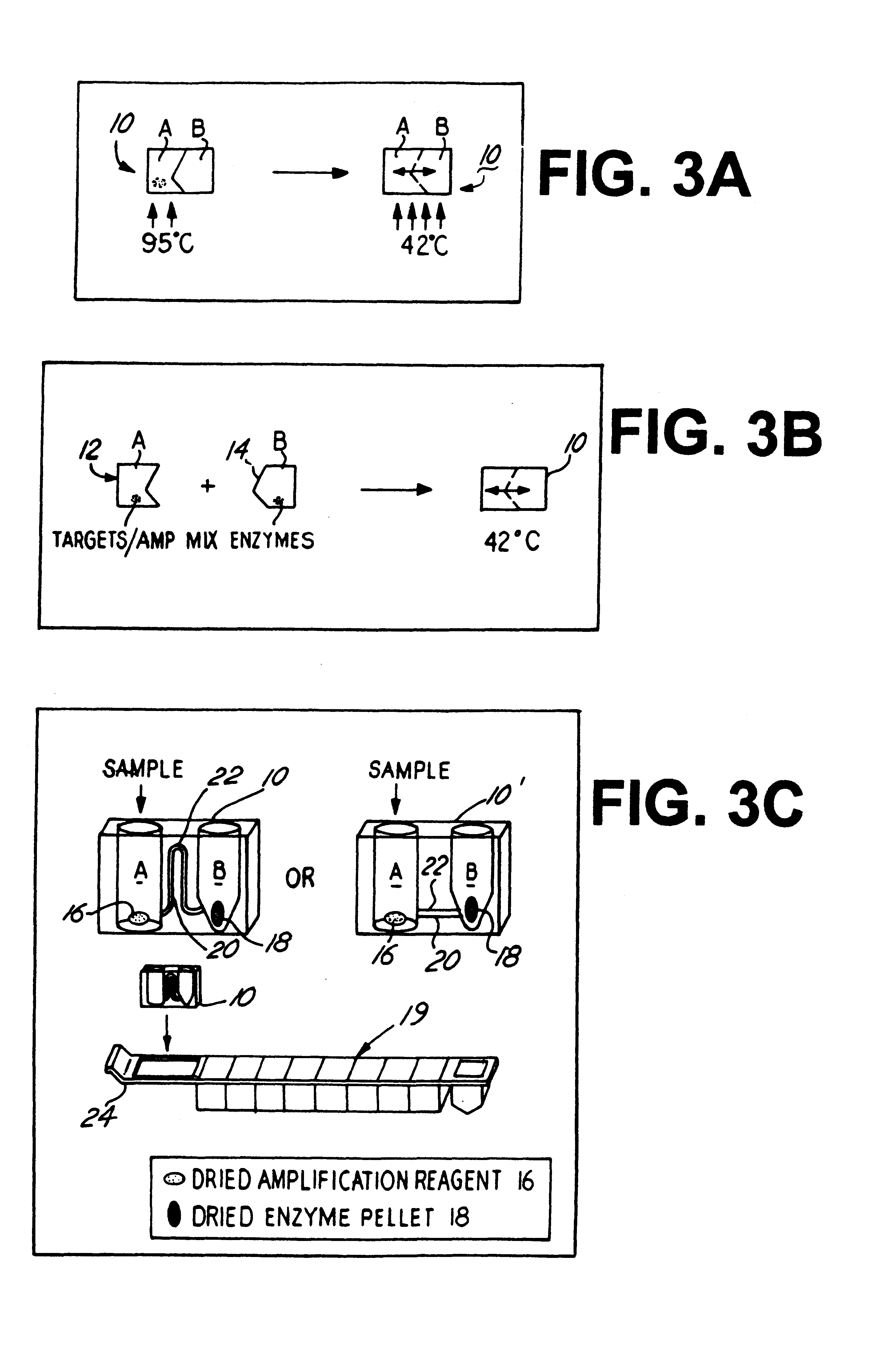Nucleic acid assays
a technology of nucleic acid and assays, applied in the field of nucleic acid assays, can solve the problems of major contamination opportunity, increased contamination probability, and difficulty in thermocycling methods, and achieve the effects of enhancing sample analysis efficiency, reducing costs, and increasing costs and tim
- Summary
- Abstract
- Description
- Claims
- Application Information
AI Technical Summary
Benefits of technology
Problems solved by technology
Method used
Image
Examples
example 1
Single Dose Reagents and Unified Buffer
The implementation of a TMA reaction (see U.S. Pat. No. 5,437,990) on-line in a VIDAS or off-line in a separate instrument (with detection occurring on a VIDAS instrument) requires modification of the chemistry used to perform the reaction manually. First, bulk packaged reagents must be modified into single aliquot doses, and second, the buffer components of the reaction has been altered to form a single comprehensive multifunctional unified buffer solution.
Under the current manual technology, the reagents are prepared as lyophilized "cakes" of multiple-assay quantities. The amplification and enzyme reagents thus must be reconstituted in bulk and aliquoted for individual assays.
Thus the automated form of TMA on the VIDAS system improves on the above manual method by utilizing single dose pellets of lyophilized reaction components that can be resuspended in a single unified buffer which will support sample dilution, denaturation of nucleic acids...
example 2
Automated Isothermal Amplification Using Thermolabile Enzymes
In order to automate the isothermal amplification assay reaction for use with clinical assay apparatus, such as a VIDAS instrument (BioMerieux Vitek, Inc.), a novel dual-chamber reaction vessel has been designed to implement the use of the unified buffer and single reaction aliquot reagent pellets described above in isothermal amplification assay of test samples which can be further used in combination with a stand alone processing station.
A) Dual reaction chambers
The use of two chambers will facilitate keeping separate the heat stable sample / amplification reagent (containing the specific primers and nucleotides) from the heat labile enzymatic components (i.e. RNA reverse transcriptase, RNA polymerase RNase H). FIG. 3A is a schematic representation of a disposable dual chamber reaction vessel 10 and the heating steps associated therewith to perform a TMA reaction in accordance with one possible embodiment of the invention....
example 3
Automated VIDAS Test for Non-amplified and Amplified Detection of Mycobacterium tuberculosis (Mtb)
Using the VIDAS instrument (BioMerieux Vitek, Inc.), modified to 42.degree. C., we have developed an in-line simple rapid nucleic acid amplification and detection assay for the clinical laboratory for the detection of Mtb in test samples which can be completed in a short time. The entire assay is designed to take place on a single test strip, minimizing the potential for target or amplicon contamination. The amplification based assay is capable of detection of Mtb where the sample contains only 5 cells similar to the sensitivity achieved by the Gen-Probe commercial kit.
The amplification based assay utilizes isothermal transcription-mediated amplification (TMA) targeting unique sequences of rRNA, followed by hybridization and enzyme-linked fluorescent detection of nucleic acid probe in the VIDAS instrument.
The amplification / detection assay can detect approximately 1 fg of Mtb rRNA, or le...
PUM
| Property | Measurement | Unit |
|---|---|---|
| temperatures | aaaaa | aaaaa |
| total volume | aaaaa | aaaaa |
| reaction temperature | aaaaa | aaaaa |
Abstract
Description
Claims
Application Information
 Login to View More
Login to View More - R&D
- Intellectual Property
- Life Sciences
- Materials
- Tech Scout
- Unparalleled Data Quality
- Higher Quality Content
- 60% Fewer Hallucinations
Browse by: Latest US Patents, China's latest patents, Technical Efficacy Thesaurus, Application Domain, Technology Topic, Popular Technical Reports.
© 2025 PatSnap. All rights reserved.Legal|Privacy policy|Modern Slavery Act Transparency Statement|Sitemap|About US| Contact US: help@patsnap.com



